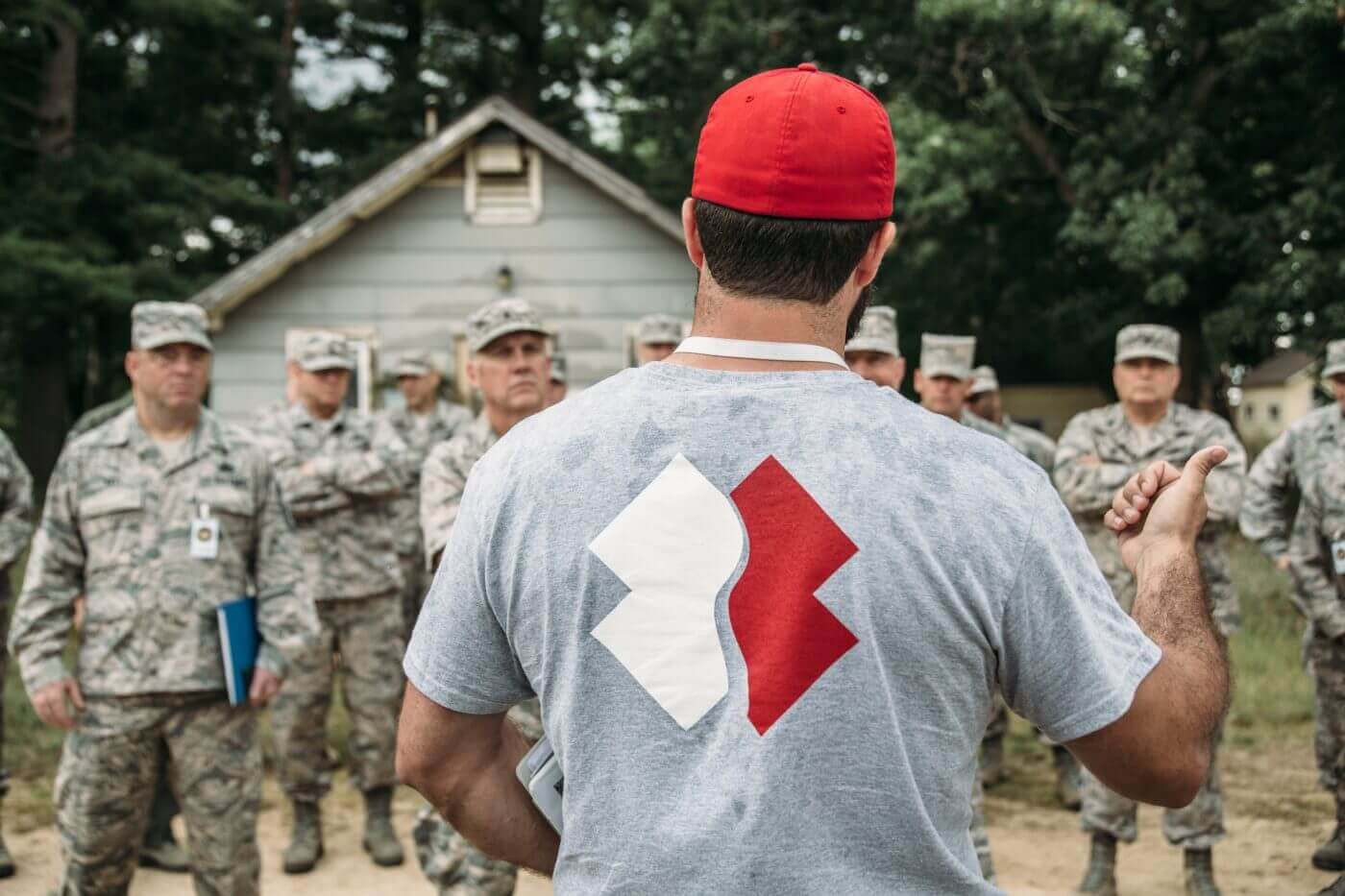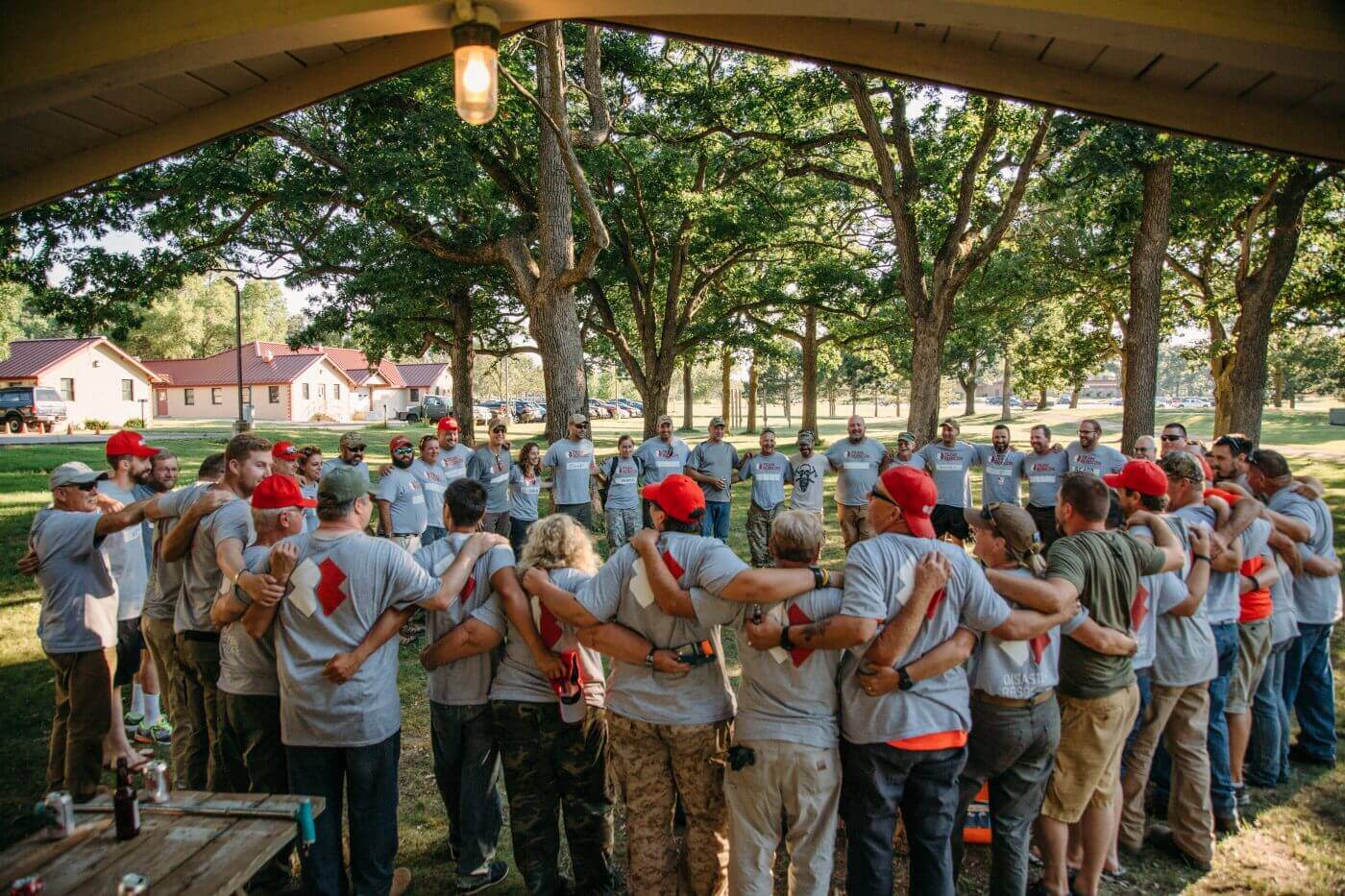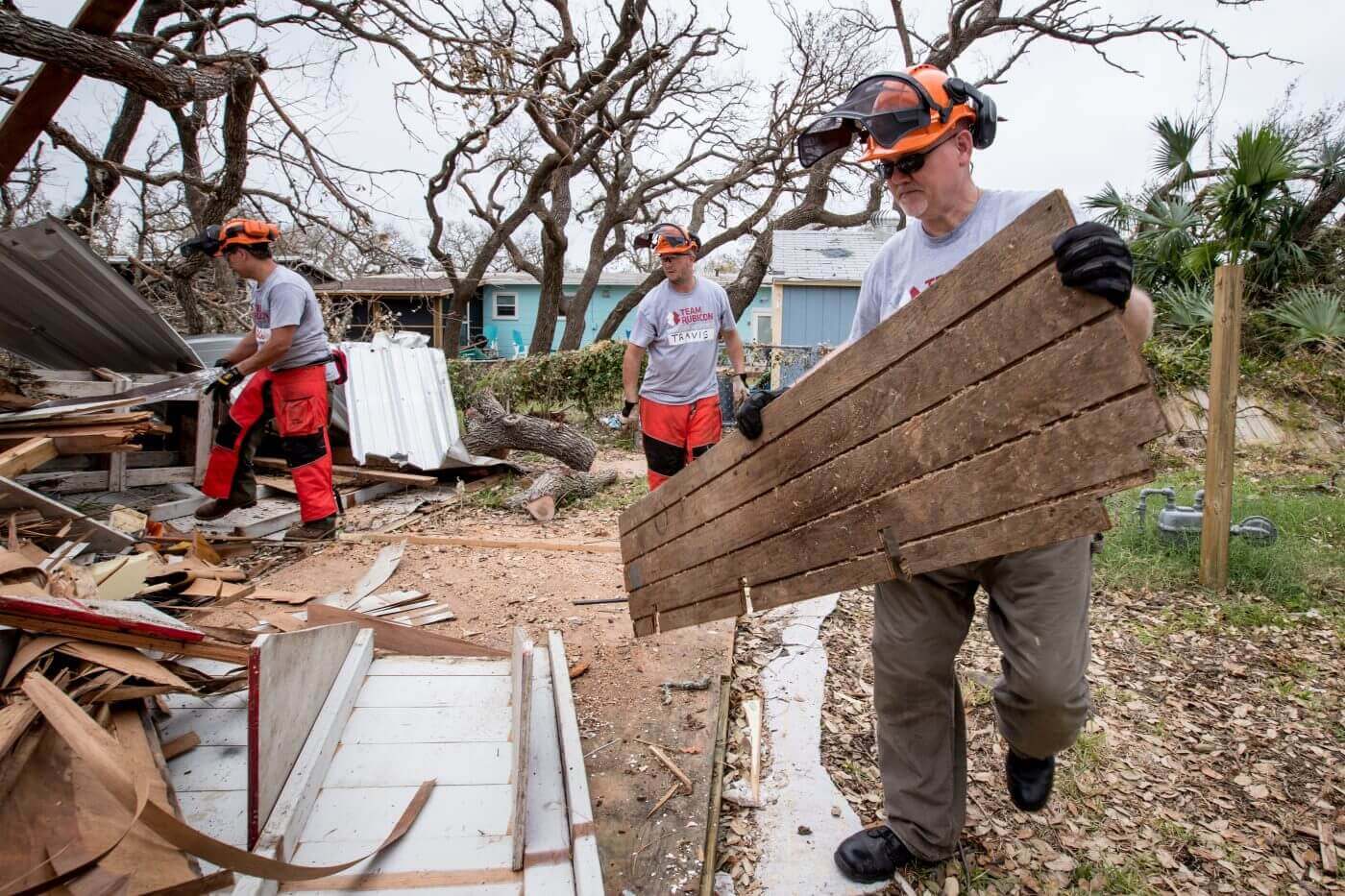We love talking about organizational culture. Internally and externally, in hiring and firing, for-profit and nonprofit, we view culture as king. We talk about it so much I can sense my team collectively rolling their eyes as they read this (actually, eye rolling is not allowed in our culture). There’s no doubt among Team Rubicon’s nearly seventy-five employees and 70,000 volunteers that our culture is the secret sauce.
So how do we actually think about organizational culture at Team Rubicon?
In my opinion, a leader has only a handful of jobs. First, the leader must set the vision — where are we going? That vision should speak to everyone in every role, it should inspire, it should align, and it should move people to action. Next, she must assemble a high-impact team, one willing and able to challenge the status quo and bring about massive change. At TR we call specifically for “Individuals foolish enough to think they can change the world and smart enough to have a chance.” Finally, she has to build a culture that counts.

But what’s that mean, to count?
We view organizational culture as the intersection, really the collision, of our ethos — what we believe, and our mission — what we do. If you explore this intersection you’ll discover an organization’s purpose for being, or why the organization exists in the world. It’s important for leaders to live at this intersection and pull others toward it so that they can feel the organization’s heartbeat.
Culture is what keeps the heart beating. Organizational culture is your company’s DNA, a sequence of millions and millions of data points that in its entirety makes a living, breathing corporate organism. It is the intangible sum of an organization’s history, principles, traditions, actions, language, perks, policies, accomplishments, failures, procedures, ambitions, fears, expectations, values, benefits, and leadership, among other things.
Organizational culture, if done well, guides your team towards the right decisions in the absence of direction. If done poorly, culture becomes a cancer that drains morale and drives up risk.

Leaders in organizations must constantly pulse check their culture. What’s working? What’s not? What’s shifting, and are we okay with it? Subtle pushes, pulls, or course corrections on the dimensions mentioned above ensure that the culture is constantly being pruned for the growth leaders desire.
When this happens, a strong, deliberately designed company culture emerges. A solid, intentional culture produces positive outcomes in the areas leaders value (whether it’s work output, employee satisfaction, stock price or any other outcome) and reduces negative outcomes (employee turnover, customer churn, etc).
Conversely, if leaders aren’t deliberate in crafting their desired culture a culture will still develop — it may just not be the company culture they want or need to meet their objectives. These cultures aren’t necessarily bad, though they are weak as it relates to driving results. Remember, a company’s culture is perfectly designed to achieve the results the company gets.

Principles vs Values vs Action
We took time to get our organizational culture right from the beginning. However, early on we never spent a lot of time talking about principles, or things like integrity, honesty, and accountability (though there was the year of Trust & Respect). We really viewed those as table stakes. If there had to be a discussion about character traits we learned about in kindergarten then we weren’t recruiting the right people.
We did, however, list out our service principles — Innovation, Tenacity, Collaboration, Accountability, and Impartiality — but that codification was as much for external stakeholders as for internal. What we focused on were the manifestation of those principles as values in action.
We really wanted to craft values that spoke to the heart of our purpose. Values that would evoke emotion and inspire action. We didn’t write these right away. Though we knew the type of culture we wanted it would have been premature to try and capture it on paper before it was baked. It’s kind of like making a killer bowl of guacamole (we’re in Southern California, after all) — you know the ingredients are pretty simple (avocados, lime, cilantro, salt, onions — ohh, but red or white?, maybe some garlic if you’re feeling crazy), and the recipe just calls for smashing things together. But getting the perfect bowl of guac requires rounds and rounds of trial and error. How smashed is smashed for the avocados — are you a creamy or chunky fan? More lime? Too much salt. Never enough cilantro. You could have started to follow a recipe, but you would have tossed it in favor of your taste buds.

About four years into the TR experiment we knew it was time to try to write the recipe. I put pen to paper (well, I typed, rather) and developed a first draft. Over the course of two months the leadership team and I revised, revisited and revised until we felt we had captured the ethos and mission of Team Rubicon. The result was the following:
-
Mission First, Greyshirts Always.
-
Step Into the Arena
-
Everyone Has a Role, Know It
-
Get Shit Done
-
Change Your Socks
-
Adults Only
-
Your Mother’s a Donor
These values are obviously unique to us, and that’s what we wanted. Most people could probably only guess what they mean, but to those in Team Rubicon they speak volumes. Perhaps what’s most beautiful is that they evoke unique emotions for each person on the team, in turn generating unique motivations that lead to principled action. Our vision might be what aligns us to our north star, but these values guide us on our journey — but only if we deliberately put them to action.



